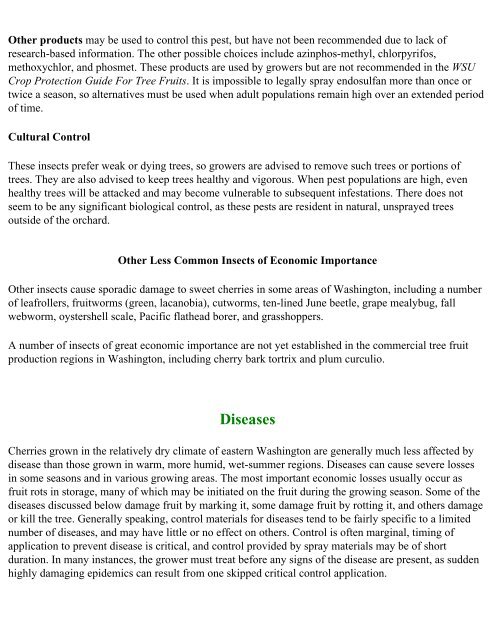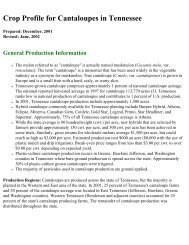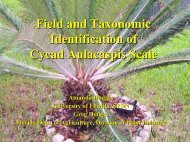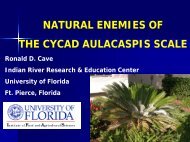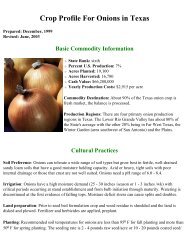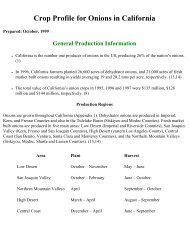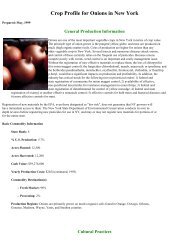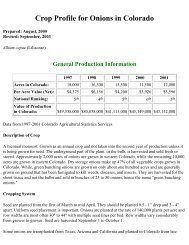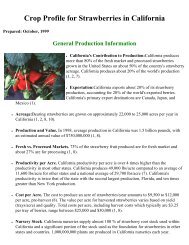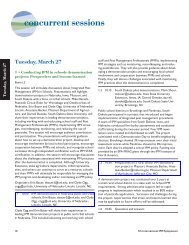Crop Profile for Cherries (Sweet) - Regional IPM Centers
Crop Profile for Cherries (Sweet) - Regional IPM Centers
Crop Profile for Cherries (Sweet) - Regional IPM Centers
Create successful ePaper yourself
Turn your PDF publications into a flip-book with our unique Google optimized e-Paper software.
Other products may be used to control this pest, but have not been recommended due to lack of<br />
research-based in<strong>for</strong>mation. The other possible choices include azinphos-methyl, chlorpyrifos,<br />
methoxychlor, and phosmet. These products are used by growers but are not recommended in the WSU<br />
<strong>Crop</strong> Protection Guide For Tree Fruits. It is impossible to legally spray endosulfan more than once or<br />
twice a season, so alternatives must be used when adult populations remain high over an extended period<br />
of time.<br />
Cultural Control<br />
These insects prefer weak or dying trees, so growers are advised to remove such trees or portions of<br />
trees. They are also advised to keep trees healthy and vigorous. When pest populations are high, even<br />
healthy trees will be attacked and may become vulnerable to subsequent infestations. There does not<br />
seem to be any significant biological control, as these pests are resident in natural, unsprayed trees<br />
outside of the orchard.<br />
Other Less Common Insects of Economic Importance<br />
Other insects cause sporadic damage to sweet cherries in some areas of Washington, including a number<br />
of leafrollers, fruitworms (green, lacanobia), cutworms, ten-lined June beetle, grape mealybug, fall<br />
webworm, oystershell scale, Pacific flathead borer, and grasshoppers.<br />
A number of insects of great economic importance are not yet established in the commercial tree fruit<br />
production regions in Washington, including cherry bark tortrix and plum curculio.<br />
Diseases<br />
<strong>Cherries</strong> grown in the relatively dry climate of eastern Washington are generally much less affected by<br />
disease than those grown in warm, more humid, wet-summer regions. Diseases can cause severe losses<br />
in some seasons and in various growing areas. The most important economic losses usually occur as<br />
fruit rots in storage, many of which may be initiated on the fruit during the growing season. Some of the<br />
diseases discussed below damage fruit by marking it, some damage fruit by rotting it, and others damage<br />
or kill the tree. Generally speaking, control materials <strong>for</strong> diseases tend to be fairly specific to a limited<br />
number of diseases, and may have little or no effect on others. Control is often marginal, timing of<br />
application to prevent disease is critical, and control provided by spray materials may be of short<br />
duration. In many instances, the grower must treat be<strong>for</strong>e any signs of the disease are present, as sudden<br />
highly damaging epidemics can result from one skipped critical control application.


